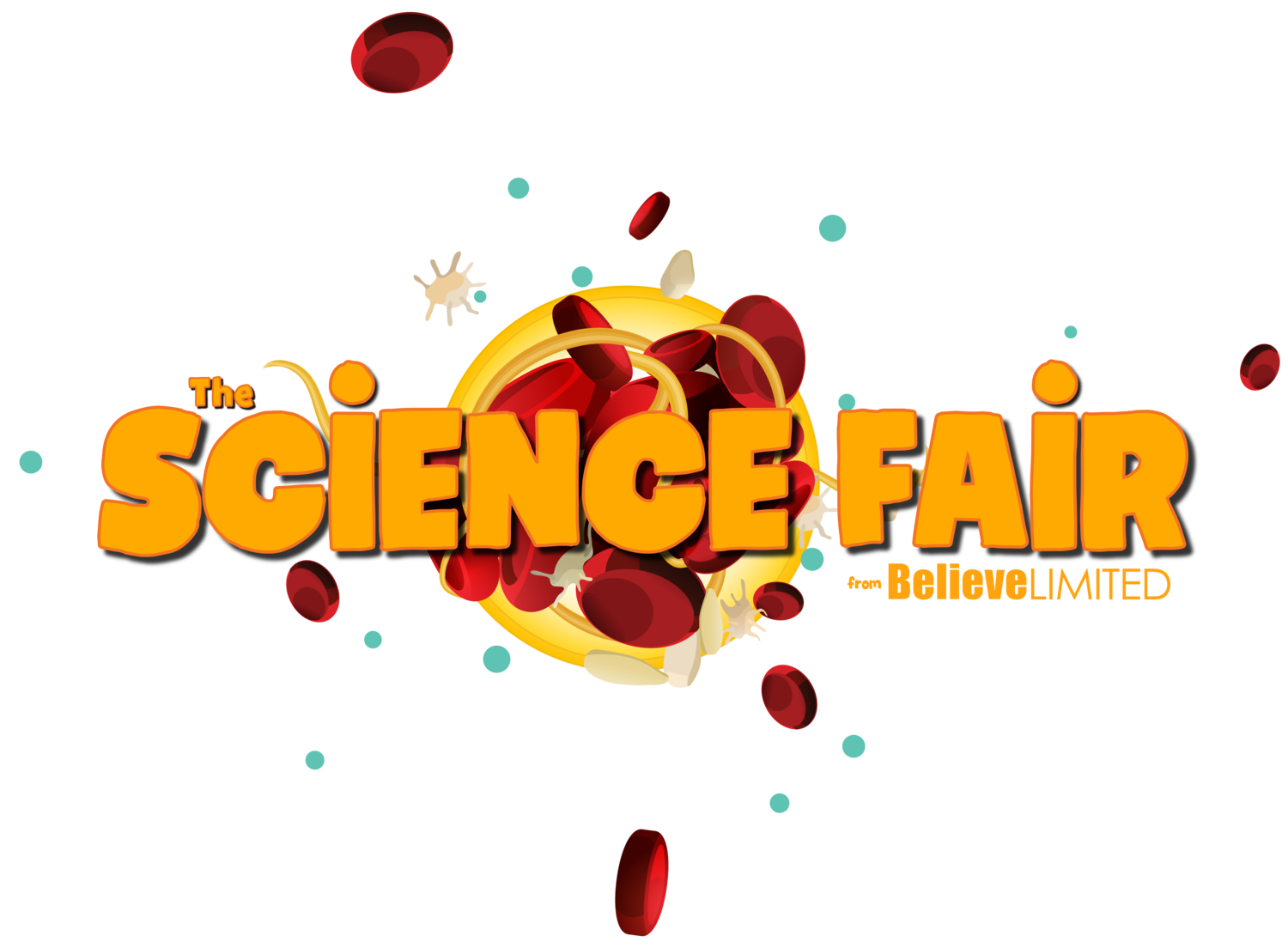GLOSSARY
Here are some key terms that are important to understand in order to grasp the science of bleeding disorders presented here by The Science Fair.
Clotting Cascade (AKA Coagulation Cascade) is the process whereby clotting factor proteins such as F8, F9, and F10 work together to form fibrin, a protein that works with platelet plugs to form a blood clot.
Clotting Factor Proteins refers to the twelve proteins involved in the blood clotting process. A definicey to any one of these proteins can result in a bleeding disorder. In the case of F8, the protein is only activated by the body when clotting is required in order to prevent against unnecessary clotting and thrombosis.
Platelets are tiny cells made inside bone marrow that create the initial “plug” when a blood vessel tears. The formation of that initial platelet plug is what’s known as primary hemostasis, and the process of clotting factors producing fibrin to help turn a platelet plug into a complete blood clot is known as secondary hemostasis.
Prophylaxis is the regular infusion of clotting factor concentrates in order to prevent bleeding. “Prophy” is considered the standard of care for the treatment of severe hemophilia.
von Willebrand Factor (VWF) is a specialized protein involved in clotting whose primary function is to bind to other proteins, most notably F8, which degrades rapidly when not bound to VWF. A deficiency in the production of VWF results in the most common bleeding disorder, von willebrand disease (VWD), which equally affects men and women.
Half-life is the time it takes for the activity level of replacement clotting factor to drop by one half (50%). In most people, F8 has a half-life of 8-12 hours, and F9 has a half-life of 18-34 hours. Factor replacement therapies that have these profiles are said to have a standard half-life, whereas some of the newer therapies boast extended half-lives, enabling longer periods of factor activity with fewer infusions.
Molecules are groups of two or more atoms are bound together, representing the smallest particle of a substance that retains all the properties belonging to that substance.
Nucleotides. A nucleotides are molecules that serve as structural components, or building blocks, of DNA.
Deoxyribonucleic acid (DNA) is a spiraling, double-helix shaped molecule made up of a sugar backbone protecting unique arrangements of nucleotides. DNA is responsible for carrying genetic instructions for the development, functioning, growth, and reproduction of all known organisms.
Genes are long stretches of DNA that typically code for something, typically proteins, and provide the body with regulatory instructions. A human body has anywhere between 20,000-25,000 genes, responsible for generating between 1-2 million proteins.
Chromosomes are entire chains of DNA supported by stabilizing proteins. These long chains can be made up of millions of nucleotides and hundreds of genes. There are 23 pairs of chromosomes- or 46 total chromosomes- that complete the human genome. With few exceptions, every cell in the body has its own full copy of chromosomes, meaning almost every cell in the body contains an individual’s complete genetic code.
Mutation. In a pair of chromosomes, any variation to the nucleotide sequence between the pair is the result of a genetic mutation. Many mutations are hereditary, while some develop spontaneously during conception or development. Mutations in genetic code can lead to dysfunction, such as the inability for the body to produce certain types of proteins.
Proteins are large, complex molecules that are essential for carrying out work that enables the body to function properly. Proteins are primarily created as a result of genetic code.
Monoclonal Antibody. Antibodies created as clones of a unique parent cell that are designed to bind to only one other substance. Bispecific monoclonal antibodies can be engineered to bind to two specific other substances. In the case of hemophilia, one treatment option includes a bispecific antibody engineered to replicate F8’s function of specifically binding F9 to F10.
Vector. Any vehicle for delivering foreign DNA into a recipient’s cells. In the case of hemophilia, the adeno-associated virus (AAV) is being explored in clinical trials as a viral vector for delivering F8 code directly and exclusively to the liver.Gene addition
